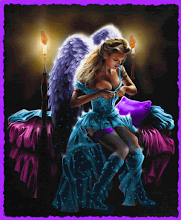Spectrum of sexual diversity out on Delhi streets
Peter from the United States was once walking down a street in South Delhi, holding hands with his boyfriend when people started pelting stones at him for being “different”. But Vicky from Bhopal has never had a nasty incident since he moved to the Capital with his boyfriend almost a year ago.
Both Peter and Vivek were among the 1,000 strong LGBT (lesbian, gay, bisexual and transgender) community that took out a march in the heart of the city on Sunday as part of the “Queer Pride March” that is taking place for the fourth consecutive year to celebrate being “different”.
“Let's splash the colours of our lives and the full rainbow spectrum of our diversity on the streets of Delhi,” proclaimed a leaflet being circulated by the organisers. However, the carnival-like atmosphere with its colours and sounds also had an element of seriousness.
“The intention now is to show people that we exist, that we are there and very much a part of our city. Although the main intention behind the march is for people with different sexual orientations to take pride in themselves, we are also making our presence felt so that one day a ‘hijra' can feel secure all year round in the presence of a policeman or even ordinary men and not just one day in a year,” said a heavily made up Amitava Sarka, a eunuch who works with an NGO.
The march started around 3 p.m. from Barakhambha Road and ended near Jantar Mantar at 6 p.m. The roughly 2-km stretch was marked by heavy police presence. “We are here for protection only; I know the eunuch community sometimes suffers at the hands of the police but we are not all like that. I support them,” said a police constable on duty.
Most of the participants felt that the turn-out this year was less impressive than last year. “I guess people were just curious during the previous years but this year, it is the people who genuinely support us that are out on the streets,” said Chunni, a lesbian.
There were others who felt that the march was not reaching out to everybody who needed it. “The march is still being led by the educated upper-class, but is a marked improvement from last year. We have more participation from the ‘hijra' community this year and it is heartening to note that many of the participants are slowly taking their masks off,” said Ashok Row Kavi, who started India's first gay magazine ‘Bombay Dost' in the early 1990's.
“This is a city where men can hold hands in public and nobody says anything, I moved here from Indore with my boyfriend and it is so liberating. I never want to leave. Delhi welcomes everyone,” said Vivek Rana, who refused to wear a mask. “I don't believe in them. At least not here,” he added.
However, his sentiments are not echoed by everyone. “It is common to see men holding hands in this city, but if people see a foreigner with an Indian they know what's up,” said Alan, a British national.
The march ended with lighting of candles and a two-minute silence that was observed for the victims of the Nand Nagri fire, which claimed around 14 eunuch lives last week.
Ending violence against the LGBT community from the police and goons, an anti-discrimination law to protect them at the workplace and the setting up of transgender boards for their protection and a gender category for documents like voter identity card and driving licenses were among some of the demands of the community


if any one from delhi wanna a good pleasent chat kindly invite me for gmail chat at email id delhichatso@gmail.com
ReplyDelete